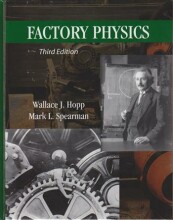Summary: Immunology
- This + 400k other summaries
- A unique study and practice tool
- Never study anything twice again
- Get the grades you hope for
- 100% sure, 100% understanding
Read the summary and the most important questions on Immunology
-
1 Introduction to the immune system
This is a preview. There are 7 more flashcards available for chapter 1
Show more cards here -
What are defense lines of the body against invaders?
- Physical barriers (skin, mucous membranes)
- Innate (non-specific) immune system
- Adaptive (specific) immune system
-
What are types of mononuclear cells?
- Monocytes (macrophages)
- Lymphocytes (B and T cells)
- Natural killer cells
-
What are types of glanular cells?
- Neutrophils (phagocytosis)
- Eosinophils (degranulation, parasites)
- Basophils (degranulation, parasites)
- Mast cells (degranulation/phagocytosis, parasites/bacteria)
-
2 Structure of the immune system
This is a preview. There are 8 more flashcards available for chapter 2
Show more cards here -
What are functions of the innate immune system?
- Release humoral mediators
- Recruite and activate phagocytes
- Produce antimicrobial proteins (AMPs)
-
3 Innate immune system
This is a preview. There are 8 more flashcards available for chapter 3
Show more cards here -
What are characteristics of neutrophils?
- Professional phagocytosing cells
- Triggered by chemokines (IL-8, C5a)
- Short life span
- Released in presence of glucocorticoids
-
What are characteristics of eosinophils?
- Detect and kill parasites by degranulation
- Triggered by chemokines (IL-5)
- Direct cell-mediated cellular cytotoxicity (CMCC)
-
What are characteristics of basophils?
- Clear parasites
- Short life span
- Direct T helper cell differentiation
- Enhance humoral memory
-
What are functions of macrophages?
- Killing of microbes via reactive oxygen intermediates (ROI) or nitric oxide (NO)
- Production of cytokines (TNF, IL-12)
- Antigen presentation via MHC molecules
-
5 Adaptive immune system
This is a preview. There are 10 more flashcards available for chapter 5
Show more cards here -
What is the T cell activation cascade?
- A DC with MHC-II informs a naive CD4+ T cell about extracellular pathogens.
- Cytokines produced by the DC stimulate the naive T helper cell to differentiate into the correct subtype.
- A DC with MHC-I activates a CD8+ T cell.
- The CTL is activated to kill cells with intracellular pathogens or cancerous self cells.
-
Which signals are required for immune activation?
- Recognition of the peptide in the context of MHC on the APC
- Enhancement of the bond between the APC and T cell by co-receptors
- Presence of a proper micro-environment (cytokines)
- Higher grades + faster learning
- Never study anything twice
- 100% sure, 100% understanding
































